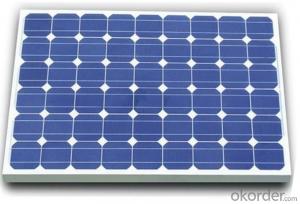Solar Cells 6*6inch Photovoltaic Product Purchase
- Loading Port:
- Shanghai
- Payment Terms:
- TT OR LC
- Min Order Qty:
- 8250 watt
- Supply Capability:
- 10000000 watt/month
OKorder Service Pledge
OKorder Financial Service
You Might Also Like
Item specifice
Solar Module Summarize
Solar Module is the core part of solar PV power systems, also is the highest value part of it. The function of Solar Module is to convert the sun's radiation to electrical energy, or transfer it to battery and store in it, or to drive the load running.
The Product has been widely used in space and ground, it mainly used for power generation systems, charging systems, road lighting and traffic signs areas. It could offer a wide range of power and voltage, and with high conversion efficiency, and long service life.
Company Description
CNBM International Corporation, as an important external business platform of CNBM Group, plays as a role to export solar products produced by CNBM. Headquartered in Beijing, We have entered into Solar PV industry since 2005. CNBM Solar is specialized in PV power systems which takes advantage of reliable supplying, convenient installation and free maintenance, and has been used widely, and it is the compensation and substitution of normal power supply. We provide power solutions for home, business and industrial customers, and provide off-grid PV systems for rural area. Our company not only can supply high quality solar Products, but also provides professional system Solutions and high quality services.
Technical Parameter:
Model Type | Good Quality 250W Solar Panel |
Peak Power-Pmax(W) | 250W |
Open Circuit Voltage-Voc(V) | 44.2 |
Maximum Power Voltage-Vmp(V) | 36 |
Short Circuit Current-Isc(A) | 5.4 |
Maximum Power Current-Imp(A) | 5 |
Maximum System Voltage | 1000V DC |
Maximum Series Fuse Rating | 10A |
Power Tolerance | -1~+3% |
Temperature Coefficients of Pmax | -0.45%/℃ |
Temperature Coefficients of Voc | -0.348%/℃ |
Temperature Coefficients of Isc | 0.031%/℃ |
Nominal Operating Cell Temperature | 44.5±2℃ |
Standard Testing Condition(STC) | Irradiance:1000W/m²;Temperature:25℃;AM=1.5 |
Qualification Test Parameters | |
Operating Temperature | -40℃~+85℃ |
Storage Temperature | -40℃~+85℃ |
Pressure Bearing | ≥5400Pascal/m² |
Wind Bearing | ≥5400Pascal/m² |
Mechanical Characteristics | |
Cell Size | Mono 156*156mm±0.5 |
No.of Cells | 60pcs(6*10) |
Dimension | 1640*992*40mm |
Weight | 18.8Kg |
Glass | 3.2mm High Transmission,Low Iron |
Frame | Anodized Aluminum Alloy |
Junction Box | IP65Rated |
Internal Diodes | 3 Bypass Diodes |
Cable | 1*4.0mm² Length 900mm |
Product Show:
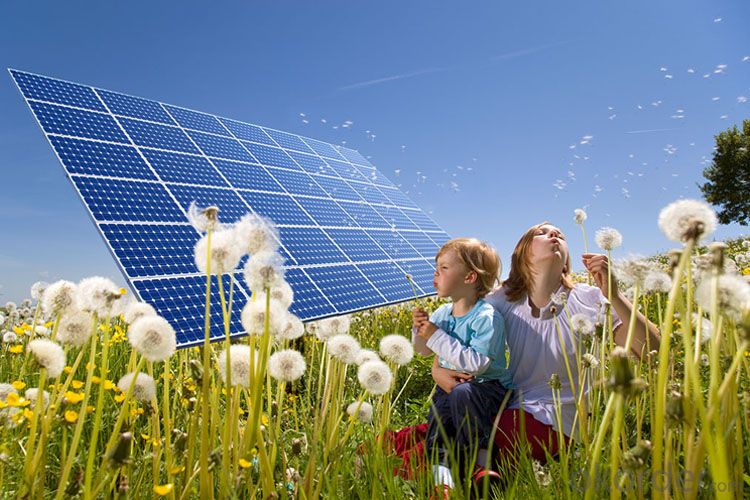
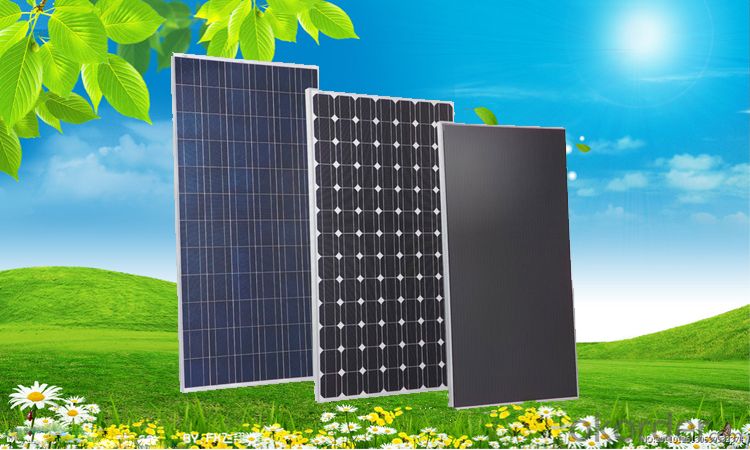
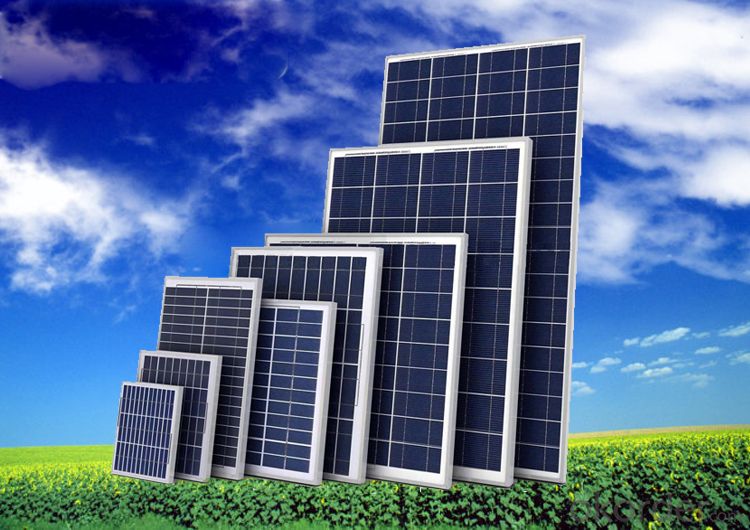
Packing & Shipping:
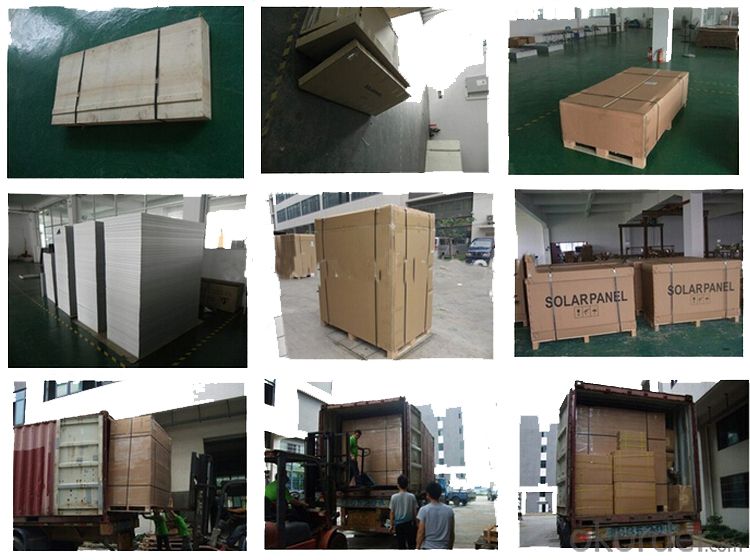
We have rich experience on how to pack the panels to make sure the safety on shipment when it arrives at the destination.
The normal size is packed by 25pcs/ carton / pallet. Paper carton for FCL shipping and wood carton for LCL shipping.
FAQ:
(1)Have you ever sold your products to companies in my country?
Of course, we have customers in all general PV markets, but I think we should expand our market share along with the market growth.
(2)When did your company set up? You are a new company, how can I believe your quality?
We entered into Solar PV industry in 2005, now we have several plants in manufacturing of a-Si and c-Si panels, and our capacity is 220MW per year. Till now we have already passed all the tests by authorized laboratories, e.g. TUV, VDE, UL.
- Q:I'm a student trying to design a mounting structure for solar panels. I'm reading about passive trackers so as to track the sun for optimal energy production; but I am not fully quot;seeinghow it works. Can someone please help explain it to me, or at least send me a link(s) that could help explain it well?THANKS IN ADVANCED!! [and HAPPY HALLOWEEN!!]
- It appears to be relying upon a phase change of liquid to gas to liquid to balance the system and return it to the east in the morning.
- Q:I have 2 20 watt Solar panel. I have it hooked up to solar controller and batteries to inverter. Am trying to figure out how much watts am getting. I found the voltage but how do I find the amp reading on a mutimeter?
- It is possible your meter does not have the capacity to safely measure more than 300 milliamps which is too small to measure current output from solar panels. Assuming no losses in the system or components, if your meter does not have the capacity to measure 0 Amps, you will need to get one that does. Analogs are better than digitial for this. Most often the 0 Amp circuit of the meter has a discrete positive plug location for the positive test lead. Most have a common ground connection with the rest of the meter functions. If you are measuring current at the battery in the charge mode- Negative lead of meter goes to positive terminal of battery and positive lead of meter goes to the cable that was connected to the positive terminal of the battery. Since the Wattage is a nominal measurement, if you measure between the panel and controller, take measurement on one leg of the panel, as you want to measure the current with the loaded active circuit. Meter is oriented the same way as the measurement at the battery would be made above only this time the meter is between the panel and controller. At peak solar conditions, expect current to be measured at 2.5 to3 Amps or more per panel. Under optimal conditions your panel will have higher output than their ratings indicate. Open circuit can be close to 20 volts. Never short circuit the output of the solar panels. It is volts multiplied by amps that gives you Watts.
- Q:I paid for an appraisal and the home was valued at $25,000. The problem I have with this is my house is equipped with solar panels. I paid about $25000 for them. A comparable house sold for $225,000 4 months ago. Same amount of rooms, bathrooms, square feet, lot size and curb appeal (landscaping). But no solar panels. Home prices in my neighborhood have also gone up. I would like to know if there is any way I can dispute this as I feel I just wasted a lot of money on a incorrect appraisal.
- Zillow ? Great at guessing value. Start with ur property tax agencies valuation. Solar panels seldom GET any return on costs. Often creating negative value. Contact actual Realtors for neighborhoods Comparison of ur house NOT appraisal. Two different animals
- Q:It measured volts before I attached it, and after attaching the voltage regulator device, the voltage dropped down to 3 volts, even when just measuring the difference in the solar panels nodes themselves, suggesting that the entire panels voltage dropped and not just the voltage in the regulator. I tried testing it with a power supply of 7 V 0. A and it works fine, but I don't know why it won't work for the solar panel.
- you cannot treat the open circuit voltage of a solar panel like a voltage source (like a battery.) the load response of the panel doesn't behave that way. small panels and panels that are producing less than about .5A are very happy to have their output voltage pulled down to whatever they're connected to (typically zero.) I observed the same phenomenon when i connected a 2V 725mA panel to a 2V 325mA fan -- the open circuit voltage of 5V dropped to 3V when connected to the fan, and returned to 5V when disconnected. The easiest workaround is to use 2V of rechargable batteries in parallel with the panel so that the battery holds the 2V potential difference and the panel just supplies the current. any excess current charges the batteries, so you might consider whether or not you need some type of charge controller to prevent burning the batteries via overcharging. there are actually very few applications of solar panels connected directly to circuits that i have seen that have any kind of robust performance -- if they work at all, they eventually die/burn themselves out in a couple of months. the best robust designs always have a rechargable battery and charge controller somewhere in the power circuitry to buffer the load circuit from the panel. .
- Q:200 watt solar panel generates how much watts of electricity per month?
- I've operated a 25 kilowatt (kw) solar panel system for two years (44 panels, rated at 90 watts each, just about like yours). It averages 0 kilowatt hours (kwh) per day, but clear days get about 60 kwh. My system generates about 3300 kwh per month (we dump directly to grid), worth about $4,000 per year. Payback for my system, which cost $00,000 (after utility rebates and tax credits), is 25 years (the expected lifetime, coincidentally). Under similar conditions, your 200 watt solar panel would average 820 watt-hours per day, or about 25 kwh per month, worth $2.50.
- Q:I want to know that, is there any thing likehow much charge we can get per square feet. in a solar panel.let me know.also, I will appreciate if reference are given.
- I found some 0 square ft. solar panels that produce 30 watts . 3 watts per s.f. . A 2,000 s.f. home would consume around 2,000 kilowatt hours of electricity in summer months in areas that require air conditioning . This would require 67 kwh daily . You would need ,000 s.f. of panels and dozens of batteries to store the energy for night time .
- Q:Do solar panels require a specific orientation or angle for optimal performance?
- Yes, solar panels generally require a specific orientation and angle for optimal performance. The ideal orientation for solar panels is facing south in the Northern Hemisphere and north in the Southern Hemisphere to maximize exposure to sunlight. Additionally, the optimal angle of tilt varies depending on the latitude of the installation site to maximize energy production throughout the year.
- Q:Do solar panels require a backup battery system?
- No, solar panels do not necessarily require a backup battery system. It depends on the specific purpose and setup of the solar panel system.
- Q:How efficient are solar panels when it comes to turning light into energy? If it's not 00%, why? Can it be improved? Also, how do solar panels work, exactly.
- Solar panel refers to a panel designed to absorb sunlight as a source of energy for generating electicity or heating.solar module use sunlight to generate electicity through photovoltaic effect.The efficiency of solar panel is 5-8%,there are a few solar panels available that exceed 9% efficiency.
- Q:I live in Hawaii and having a solar panel is not a bad idea since we have plenty of sun the only problem is that it cost a lot of money and takes many years before you get your money back. There are kits available where you can make and install your own solar panel and wind turbine but is it bull **** or is it a good deal?
- If you're in Hawaii, number one, be sure to get a solar water heater. Guaranteed fast payback. Now about those kits. Avoid the kind that says you can make your own panels for under $200. Those are scams. If you're in CC of Honolulu, you will not be allowed to connect that kind of panel to your house - it doesn't meet National Electrical Code because it doesn't have a safety rating like UL. There are kits for grid-tied solar that run from $6000 on up. That's the kind that can actually save you money. I don't know whether you are allowed to install it yourself, though. In California, you can, as long as you get the inspection, same as any other building project. In spite of being further south, Honolulu gets about the same amount of sun as we do in San Jose, California. That's because our area is dry, and you have more clouds and rain during an average year. If you're in one of the wet valleys like Manoa or Palolo, obviously the situation would only be worse. But your electric rates are high, so you have a good chance of making your money back. Very few sites are really good for wind turbines. You cannot just put it on your roof in the city - it needs to up high, where the wind is strong and steady. That's why you see turbine mounted on towers. Also, because it has moving parts, it's going to wear out. Finally, you know how cars rust out quickly there compared to the mainland? Same thing with a wind turbine.
1. Manufacturer Overview |
|
|---|---|
| Location | |
| Year Established | |
| Annual Output Value | |
| Main Markets | |
| Company Certifications | |
2. Manufacturer Certificates |
|
|---|---|
| a) Certification Name | |
| Range | |
| Reference | |
| Validity Period | |
3. Manufacturer Capability |
|
|---|---|
| a)Trade Capacity | |
| Nearest Port | |
| Export Percentage | |
| No.of Employees in Trade Department | |
| Language Spoken: | |
| b)Factory Information | |
| Factory Size: | |
| No. of Production Lines | |
| Contract Manufacturing | |
| Product Price Range | |
Send your message to us
Solar Cells 6*6inch Photovoltaic Product Purchase
- Loading Port:
- Shanghai
- Payment Terms:
- TT OR LC
- Min Order Qty:
- 8250 watt
- Supply Capability:
- 10000000 watt/month
OKorder Service Pledge
OKorder Financial Service
Similar products
New products
Hot products
Hot Searches
Related keywords
